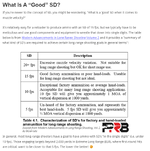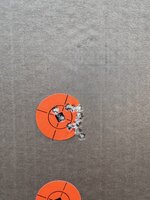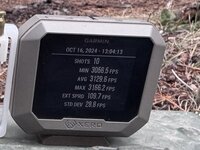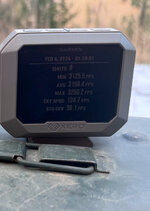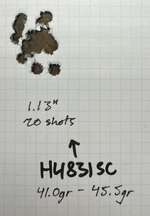I should stay out of this as I'm just an armchair long-range shooter for the most part. But this is the internet, and I've read some books, blogs, and forums, so here we go.
I believe what Form is trying to say here is that MV dispersion is only one of many variables (rifle accuracy error, aiming error, BC error, wind error, etc) that affect point of impact on target. If you disperse this effect with realistic variations on those other effects, you will not see a 1:1 change in vertical.
This makes sense to me. The statement that ES and SD don't "directly correlate" with vertical dispersion at long range left me scratching my head a little bit. It seems obvious/logical that they are correlated and that vertical dispersion at range is a function of muzzle velocity consistency.
Here's a snippet from Litz making the point that muzzle velocity consistency can be more important to long range hit probability than raw dispersion in certain circumstances.

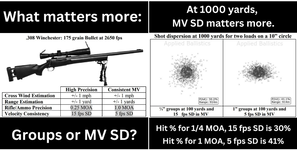
Shamelessly snipped from:
https://www.facebook.com/BryanLitzB...may-be-frustrated-getting-co/505306375445571/
But I agree it's not 1:1, and there is a point of diminishing returns to muzzle velocity consistency. Where that point is will depend on several other variables including those listed and the target size.
Here's an example from Cal based on WEZ:
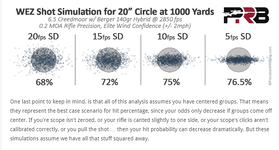
From:
https://precisionrifleblog.com/2015/04/18/how-much-does-sd-matter/
Now that being said, a lot of people are using ES and SD interchangeably in this thread. It's very important to understand that SD has roughly 3x the effect of ES. So talking about a 30fps SD or a 30fps ES are two drastically different things - that would be like saying 90fps ES vs 30fps ES. I absolutely believe that increase an MV SD from say 10fps to 30fps will have a significant effect on hit rates at 500+yds. Perhaps you could post some WEZ runs to quantify this.
Agree with all of this. To bring this back to what started our sidequest here:
My experience with these really high performing ball powders... like leverevolution or superformance is that you will NEVER get the ES/SD needed for ethical shots at 800, let alone 1000 yards. They're great for speed, but not consistent enough for that long of range of shooting. Which mirrors what the Allterra guys were seeing.
My reloads for the 277 fury, the best SD I have for that round at higher pressures is 37(sample size 52). Run that through a WEZ and tell me you're taking a shot at even 500 yards. If I back the pressure off and use a single base stick at just over 65k, I can get great SD's around 5.
An SD of 37 based on that many shots translates to an ES of something like 110 from fastest to slowest. Assuming a 110 fps difference and using Federal's published G1 BC for the 170 TA (.646) and 3000 fps as a mid-point (so a velocity range of 2945 - 3055), velocity variability is contributing up to 3.61"/0.68MOA/0.2MIL of vertical dispersion at 500 yards. That's not a miss on big game all by itself, but it's not all by itself and it's only going to get worse the further you go out. I don't have access to the WEZ tool, but as solarshooter said, it would be interestng to see how much that affects hit probability under various scenarios at 500 yards (and further ranges).
z987k : did you run a WEZ analysis on this that you could share?
Positive compensation is an interesting theory, and Bryan Litz did some testing of it in his latest book. His conclusions were not definitive either way, but they certainly did not disprove the theory. Now, as is well known around here I am very skeptical of "anecdotes as evidence". The testimonies from the BR shooters are extremely vulnerable to small sample testing errors, confirmation bias, and many other pitfalls in data interpretation that that community is particularly prone to. Do I believe that small groups have been shot with greater than single digit MV SD? Yes. Is this proof of positive compensation? No. There are many, many other explanations for these small groups.
Agree again. Count me among the skeptics.





